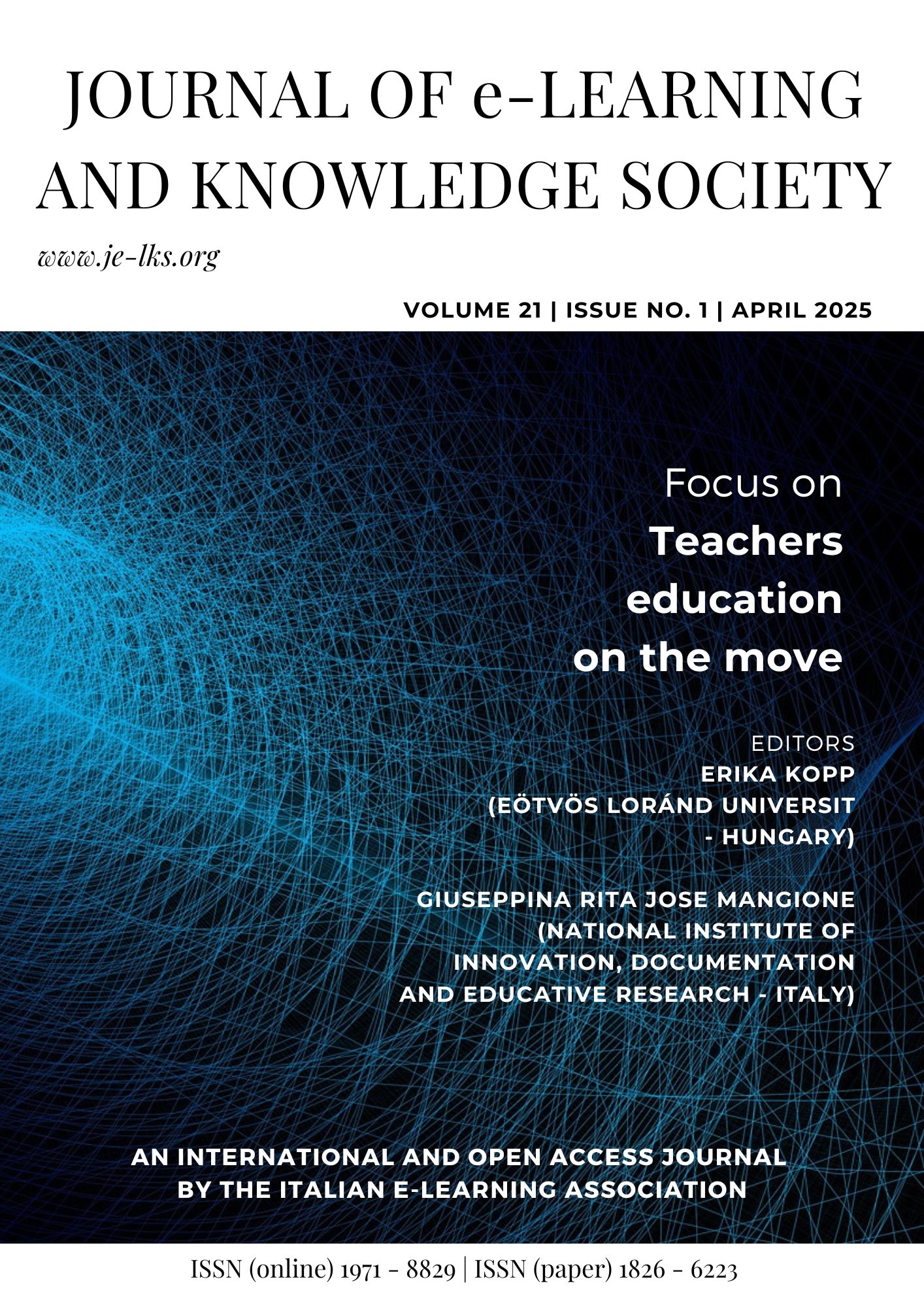Main Article Content
Abstract
Over the past few decades, there has been a growing interest in tinkering and making, also driven by environmental concerns that define this era. This has led to the rise of creative recycling, facilitated through Do-It-Yourself practices enhanced by digital technologies and practiced in equipped spaces, where commonly used tools and materials are shared by small communities. These makerspaces have also been established in schools, contributing to the adoption of active learning methods, which research shows to be highly effective. The European Erasmus+ “Steam2Go” project aims to create a mobile makerspace that is easily transportable, equipped with pedagogically effective instructions and detailed descriptions of consistent educational experiences. The goal is to make the teaching of STEAM subjects more active, engaging, and inclusive. The pilot experiments conducted with mobile makerspaces involved students (N=184) and teachers (N=15) from various school levels and grades across four partner countries (Cyprus, Greece, Italy, and Poland). The research, conducted through individual questionnaires completed by all participants at the end of the activities, focuses on perceptions and beliefs related to the empowerment achieved by students and teachers. The findings reveal a high level of enjoyment, a perception of improvement in STEAM subjects as well as transversal skills, and a positive appreciation of the Open Educational Resources, which transform the mobile makerspace into an effective educational tool.
Keywords
Article Details

This work is licensed under a Creative Commons Attribution-NonCommercial-ShareAlike 4.0 International License.
The author declares that the submitted to Journal of e-Learning and Knowledge Society (Je-LKS) is original and that is has neither been published previously nor is currently being considered for publication elsewhere.
The author agrees that SIe-L (Italian Society of e-Learning) has the right to publish the material sent for inclusion in the journal Je-LKS.
The author agree that articles may be published in digital format (on the Internet or on any digital support and media) and in printed format, including future re-editions, in any language and in any license including proprietary licenses, creative commons license or open access license. SIe-L may also use parts of the work to advertise and promote the publication.
The author declares s/he has all the necessary rights to authorize the editor and SIe-L to publish the work.
The author assures that the publication of the work in no way infringes the rights of third parties, nor violates any penal norms and absolves SIe-L from all damages and costs which may result from publication.
The author declares further s/he has received written permission without limits of time, territory, or language from the rights holders for the free use of all images and parts of works still covered by copyright, without any cost or expenses to SIe-L.
For all the information please check the Ethical Code of Je-LKS, available at http://www.je-lks.org/index.php/ethical-code
References
- Berelson B. (1952), Content Analysis in Communication Research. Glencoe, Free Press.
- Blikstein, P. (2013). Digital fabrication and ‘making’ in education: the democratization of invention. In J. Walter-Herrmann, & C. Büching (Eds.), FabLab: Of Machines, Makers and Inventors (pp. 203-221). Bielefeld: Transcript.
- Cohen J. (1960), A Coefficient of Agreement for Nominal Scales, Educational and Psychological Measurement, 20(1), 37–46.
- Frydenberg, M. E., & Andone, D. (2011). Learning for 21st century skills. IEEE’s International Conference on Information Society (i-Society 2011) 314–318. London, UK.
- Halverson, E. R., & Sheridan, K. (2014). The maker movement in education. Harvard educational review, 84(4), 495-504.
- Hatch, M. (2013). The Maker Movement Manifesto: rules for innovation in the new world of crafters, hackers, and tinkerers. New York, NY: McGraw Hill.
- Honey, M., & Kanter, D. (Ed.). (2013). Design, make, play: Growing the next generation of STEM innovators. New York, NY: Routledge.
- Huser, J. et al (2020). STEAM and the Role of the Arts in STEM. New York: State Education Agency Directors of Arts Education.
- Kolb, D. A. (2014). Experiential learning: Experience as the source of learning and development. Upper Saddler River, NJ: Pearson.
- Mayring P. (2004), Qualitative Content Analysis, A Companion to Qualitative Research, 1(2), 159–176.
- Merriam, S. B. (1998), Qualitative Research and Case Study Applications in Education. Revised and expanded from “Case Study Research in Education”, San Francisco, Jossey-Bass.
- Rouse, R., & Rouse, A. G. (2022). Taking the maker movement to school: A systematic review of preK-12 school-based makerspace research. Educational Research Review, 35, 100413.
- Unterfrauner, E., Hofer, M., Pelka, B., & Zirngiebl, M. (2020). A new player for tackling inequalities? Framing the social value and impact of the maker movement. Social Inclusion, 8(2), 190-200.
- Vuorikari, R., Ferrari, A., Punie, Y. (2019). Makerspaces for Education and Training. Exploring future implications for Europe. JRC117481. Luxembourg: Publications Office of the European Union.
- World Economic Forum – WEF (2023). Future of Jobs Report 2023. Geneva: WEF.
- World Economic Forum – WEF (2015), New Vision for Education: Unlocking the potential of technology. Vancouver: British Columbia Teachers’ Federation.

